The exclusive charm of straw-thatched roofs
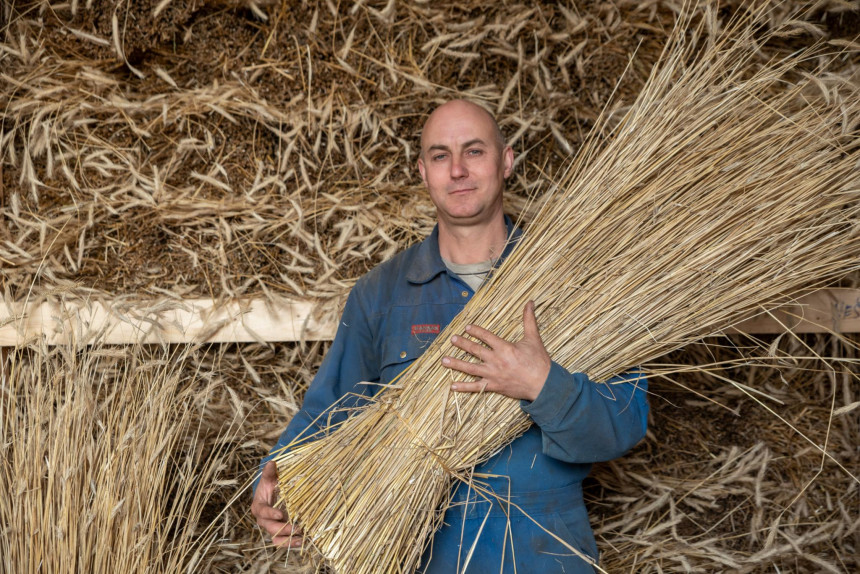
Looking back at a few centuries old rural landscapes of Latvia and other European countries, we see that there is a certain diversity in roof coverings – straw-thatched roofs, reed roofs, shingle and chipboard roofs. Wonder what considerations determined the owner's choice? The answer is quite simple – the roof was covered with what was available. If the area is rich in water and reeds, reed roofs dominated, if the area is more wooded, then shingle or chipboard roofs were the most common, but in fertile areas with strong grain growing traditions, the roofs of buildings were most often covered with straw.
The most common historical roofing in the countryside - shingles, reeds and straw
This time we will talk only about rural landscapes and the roofs of the buildings in them. Understandably, when constructing a new building in a rural environment, the owner faces many architectural challenges, because it is necessary to choose the style of buildings that fit the environment while being comfortable as a living space, as well as follow modern trends, namely ecological and energy-efficient construction.
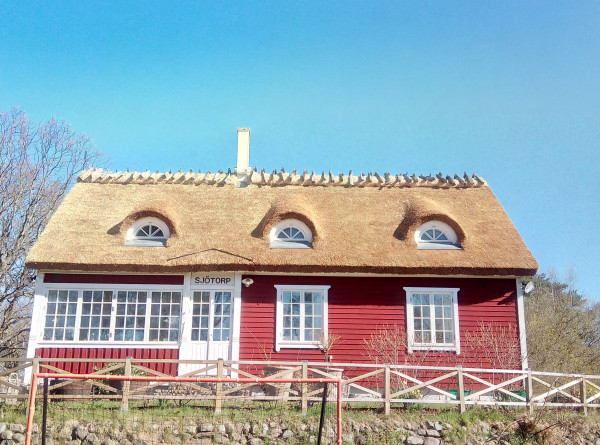
Also when renovating old farms and adapting them for living or guest accommodation, one of the most important questions is the choice of roofing. Not every house will look good when roofed with modern materials, although they are very different and, if chosen correctly, can create the illusion of the authenticity of the building, but it will be just an illusion! To keep a building or a complex of buildings in a certain historical style, you will not be able to make do with the cheapest and most convenient option - you will have to use your mind, imagination, financial resources and also your work to get a roof that can meet that style, which can be made of reeds, shingles or straw. Manufacturers and installers of reed and shingle roofs in Latvia can be found relatively easy, but a straw bundler and roof installer in one person, as far as I know, can be found only in Ranka, Gulbene municipality, where Jānis Pūcītis mows rye himself, hulls it and prepares straw bundles himself, as well as installs the roofs himself.
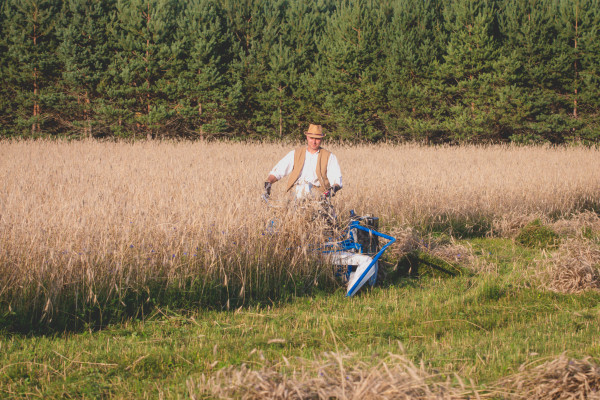
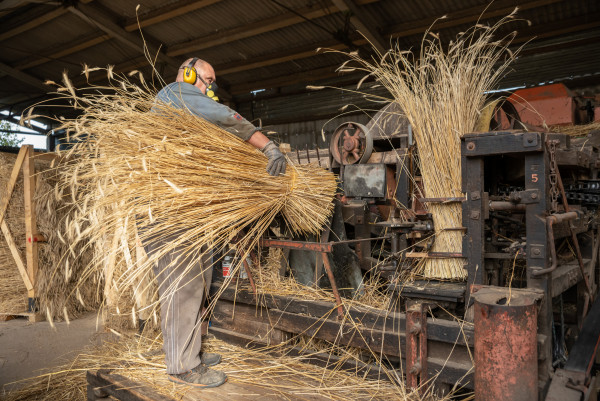
Learned the craft in Sweden
In 2013, led by various twists and turns of life, Jānis Pūcītis went to Sweden to an old craftsman who specialized in laying straw and reed roofs. The field of construction was already known to Jānis, so straw and reed roofs were a new challenge for professional growth. Under the guidance of the old craftsman, Jānis learned not only the specifics of straw and reed roofs but also the subtleties of restoring windmills and ancient buildings. In 2019, he returned to Latvia and started his own business - he takes orders himself, takes care of raw materials and puts down the roofs himself, mainly in Sweden and Denmark. If there is enough time, Jānis also restores windmills and ancient buildings.
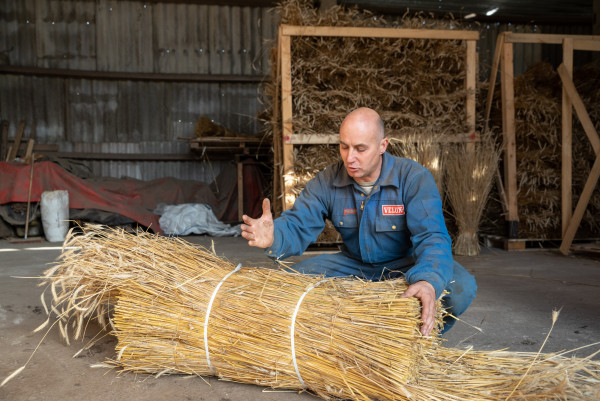
Jānis names the availability of raw materials as the biggest challenge in the development of this business. In the past, farmers grew grains only organically - they grew on long stalks, so even now only organically grown Kaupo rye straw is used for straw roofs because conventional agriculture uses technologies that limit the growth of grains. Organic rye, on the other hand, tends to grow up to two meters long - it is the length that is crucial for the production of a high-quality straw roof. At present, an agreement has been made with the surrounding farms, which grow rye for baking bread. "In order for straw to be used for roofing, it is very important to properly mow it and hull the grain - straw must not be broken or damaged - as soon as the straw is damaged, it will not be able to protect itself from the effects of the weather. That's why I go to the field with a special mower and straw binding machines, I mow the rye and I return the obtained grains to its owner.”
For the preparation of straw bundles, Jānis has one of the seven straw bundle cleaning and preparation machines found in Europe, in which the cut rye stalks are hulled, thoroughly combed from weeds, trimmed and tied again. As the name of the company - Janis ECO B&C - shows, a lot of attention is paid to ecological construction, so even the cord used for tying bundles is made of coconut fiber. Asked about the service life of thatched roofs, Jānis says: “The service life is not less than 25 years, but the roof can also stand for 60 years and more. It is not always necessary to replace the entire roof, it is often enough to replace only the damaged areas, and the roof can remain for many more years. Straw and reed roofs are absolutely ecological and energy-efficient solutions - this is very important at a time when the whole world is thinking about how to reduce the footprint in the ecosystem.”
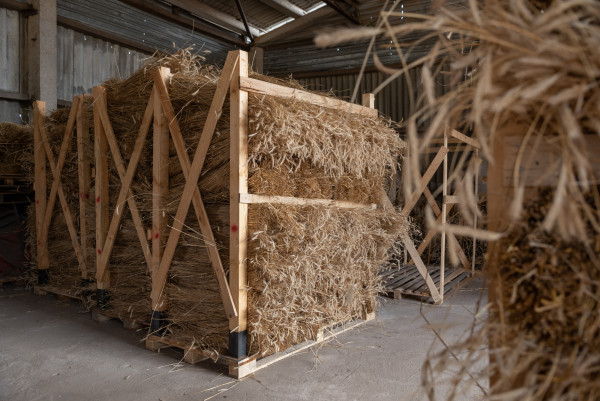
Prices would be lower if people wanted to participate
There is no denying that a thatched roof is by no means the cheapest type of roofing - the costs are relatively high, but the benefits are also impressive and outweigh the investment. The craftsman says: “Currently, I mainly work with Swedish customers because there is a large and stable demand there. However, I would like to implement projects in Latvia as well. The most important directions of development are the increase of organic rye mowing areas and the training of new roofers. It's hard to manage it all by myself, so I've hired two young guys to teach them the job. I would also be happy if the customers themselves expressed a desire to get involved in laying the roof - by working under the directions of the craftsman, the costs would be lower for the customer, but the benefit would be higher. A roof that you yourself have laid has a completely different mental value!”
The craftsman plans to mow reeds in winter and offer not only straw but also reed roofs next year.
Practice shows that 10 bundles of straw are needed to cover one square meter of roof. In 2019, which was the company's first year of operation, 5 thousand bundles were produced and exported, so the total area of roofs covered with Latvian rye straw in Sweden was 500 square meters. In 2020, the volume increased - 8 thousand bundles were prepared, but this year it is planned to prepare and send 12 thousand bundles to customers.
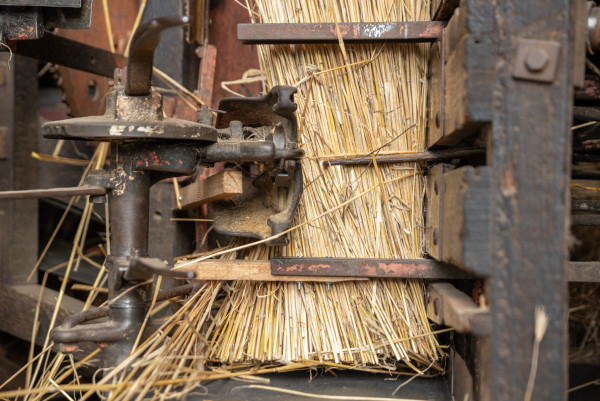
MORE INFORMATION: www.janiseco.com; facebook.com/JanisEcoBC
